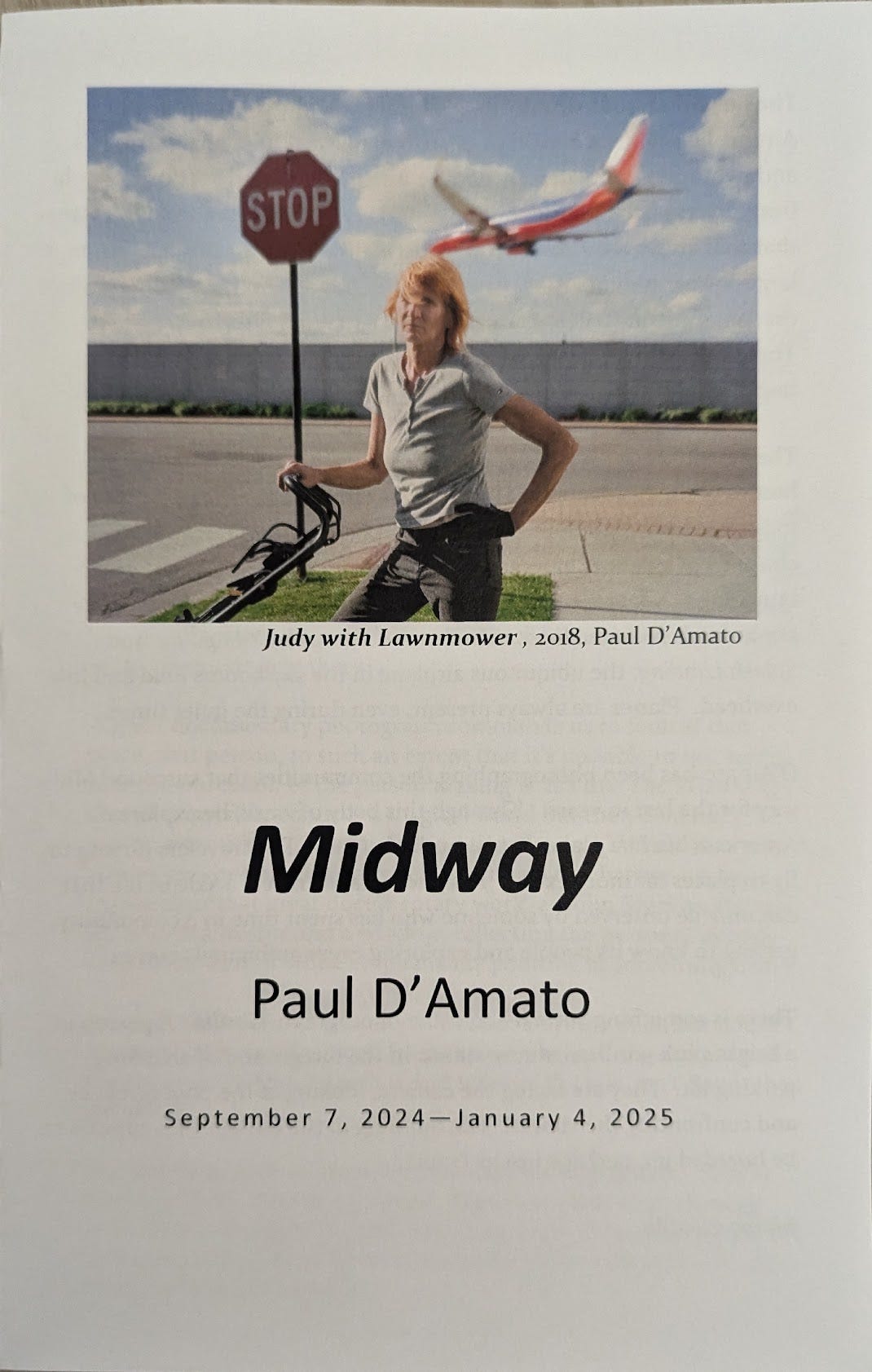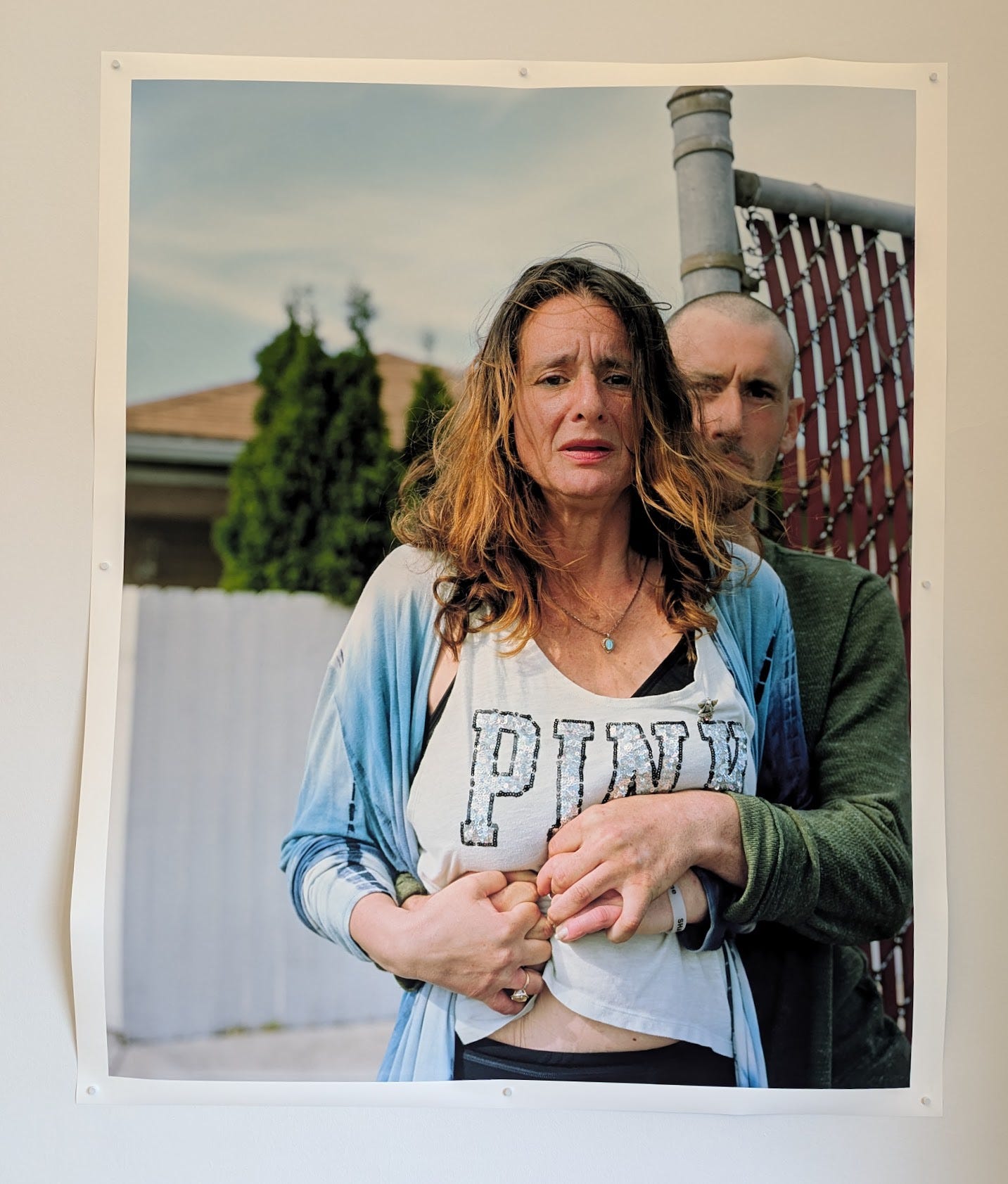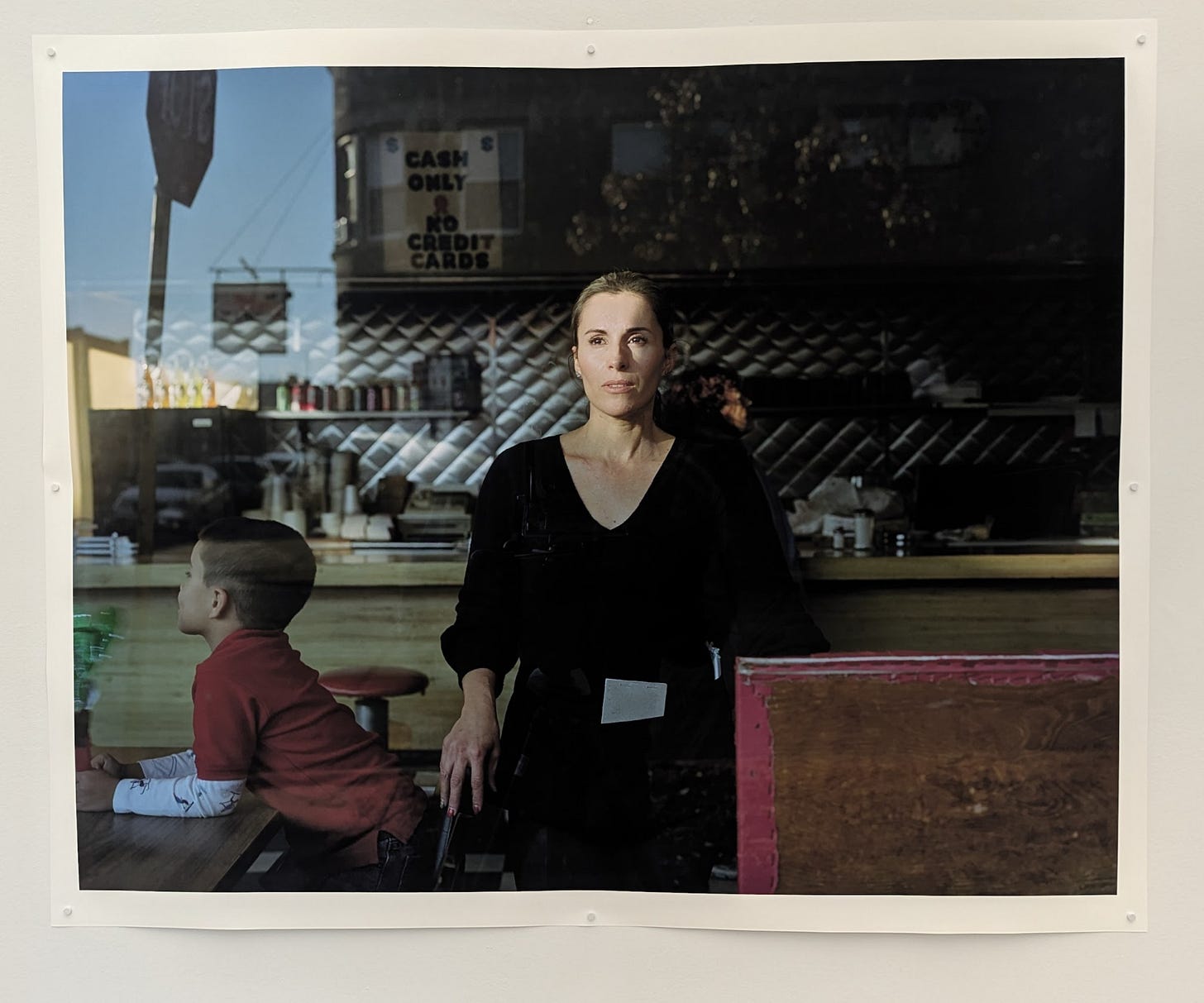Seeing Paul D'Amato's Midway
Chicago's Cultural Center is the best museum you never go to.
The galleries at the Chicago Cultural Center, run by the City of Chicago’s Department of Cultural Affairs and Special Events (DCASE) have uniformly excellent exhibits that quietly outshine, year after year.
Right now the show hanging in their premiere space— the Chicago Rooms, 2nd Floor North, on the Michigan Avenue side— is Paul D'Amato's Midway.
Gallery patrons, Chicago Cultural Center, September 2024
This exhibit is the result of photos taken patiently over the last ten years, and it shows up in trust, in people staring straight into lenses, at someone they know.
The show has some of the best images of people we’ve ever seen. Truly. As an observer, you feel very connected, as if you can relate to exactly what the people featured were feeling the moment the photo was snapped. And as Chicagoans, seeing such a multicultural neighborhood depicted in art was tremendous.
Here’s how D'Amato describes the people of Midway on his website:
Though all working class, the Midway community is difficult to define and routinely ignored by everyone going to the airport to fly to places that are far more exotic. Just about every ethnic group in the city lives here against a backdrop of strip malls, fast food, motels, light industry, shipping and transportation. Everyone is midway between urban and suburban – between immigration and assimilation – all striving to be somewhere else; although very few have flown on the jets that make their dishes rattle every seven minutes.
Cover of program for Paul D'Amato's Midway at the Cultural Center.
SL in gallery.
Most of the pieces are simply affixed and bracingly direct.
Photographer on the outside looking in and the subject looking past is common. D’Amato’s framing is exquisite.
Elsewhere
Buy from Stephen Daiter Gallery
We also loved Freedom Square: The Black Girlhood Altar last year in the first floor galleries
Keith Haring: The Chicago Mural told the true story of one of the most fertile weeks in Chicago art history
CHICAGO: Where Comics Came to Life (1880-1960), curated in part by Chris Ware, was a loving and detailed take on a part of Chicago history I never heard before
DCASE does a great job of archiving their exhibits— see them all here
Bonus
If/ when you go, look for the Peace Prophet to see if she’s out selling on Wabash at Randolph.







